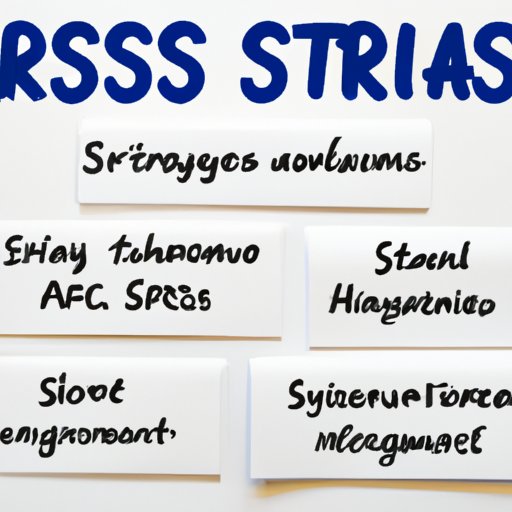
Introduction
English is a language that is spoken by millions of people around the world. However, for many non-native speakers, mastering the nuances of English pronunciation can be challenging. One important aspect of English pronunciation that can be particularly tricky is understanding stress syllables. In this article, we will explore what stress syllables are and why they matter in English language learning and communication.
Understanding the Basics: Stress Syllables 101
Stress syllables refer to the syllables in a word that are pronounced with more emphasis or force than the surrounding syllables. In English, stress syllables play a critical role in determining the rhythm and flow of spoken language. Depending on the stress pattern of a word, different syllables may be emphasized, which can alter the meaning or impact of a sentence. For example, consider the two following sentences:
- He’s gone to India.
- He’s gone to induce her.
While the two words “India” and “induce” may look similar on paper, they are pronounced with different stress patterns. The emphasis on the first syllable of “India” gives the word a different sound and meaning compared to the emphasis on the second syllable of “induce”. It is critical to understand stress syllables to ensure smooth and effective communication.
Why Stress Syllables Matter in English Language Learning
For non-native speakers, understanding stress syllables can be a significant challenge when learning English. Stress syllables can affect the comprehension of words and the overall meaning of sentences. Incorrect stress patterns can lead to difficulty in understanding what is being said. It can also lead to confusion or misunderstanding in communication. Stress syllables are often a crucial aspect of English pronunciation that needs to be mastered to ensure effective communication.
A Guide to Identifying Stress Syllables in English Words
Identifying stress syllables in English words can be a daunting task for non-native speakers. Fortunately, there are strategies to help identify them. The first strategy is to focus on how many syllables are in the word and which one sounds stronger. Usually, longer words have at least two stress syllables. In general, stress syllables can either be placed on the first or second syllable of the word. However, there are exceptions to this pattern, and stress syllables can occur on any syllable in English words. Additionally, stress syllables can change depending on the context of the sentence.
How to Improve Your Pronunciation with Stress Syllables
Improving pronunciation with stress syllables takes time, patience, and practice. One way to practice stress syllables is to listen carefully to recordings of native speakers. Identify where they place the stress syllables and repeat them until you can hear and feel the difference. You can also practice singing songs in English to help improve rhythm and intonation. Lastly, using stress syllables in everyday speech can help you become more comfortable with them and improve your pronunciation over time.
Mastering English Pronunciation with Stress Syllables
Mastering stress syllables is a crucial step for non-native speakers to improve their English pronunciation. Proper stress patterns can make communication clearer and more effective. The more you focus on stress syllables, the easier it will become to hear and feel the difference, leading to better spoken English.

Why Stress Syllables Are Crucial for Effective Communication
Stress syllables affect the rhythm and flow of spoken English. They play an essential role in expressing emotions and communicating nonverbally. Stress syllables can change the context of a sentence and convey different meanings, altering the intended message. Correctly placing stress syllables and identifying them can ensure that your spoken English is understood clearly and effectively.
The Role of Stress Syllables in Accent Reduction Techniques
Stress syllables are often a key focus in accent reduction programs. Understanding and correctly using stress syllables can significantly improve your English pronunciation if you are a non-native speaker. Accent reduction programs place emphasis on stress syllables to help non-native speakers become more comfortable with English pronunciation. By mastering stress syllables, non-native speakers can gain confidence in their English communication skills and improve their professional prospects.
Conclusion
Stress syllables are an integral part of English pronunciation and communication. They can be challenging for non-native speakers to master, but with patience and practice, it is possible to improve. Understanding stress syllables has significant benefits in improving communication and confidence in English. By following the strategies and tips outlined in this article, you can work towards better pronunciation, clearer communication, and an improved understanding of the English language.




